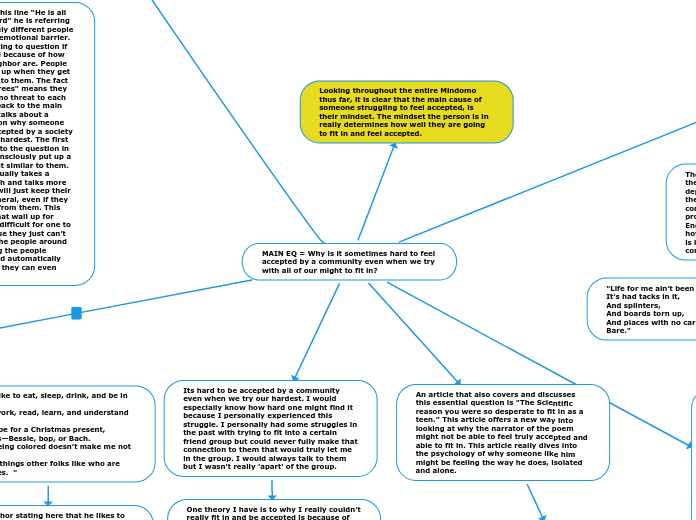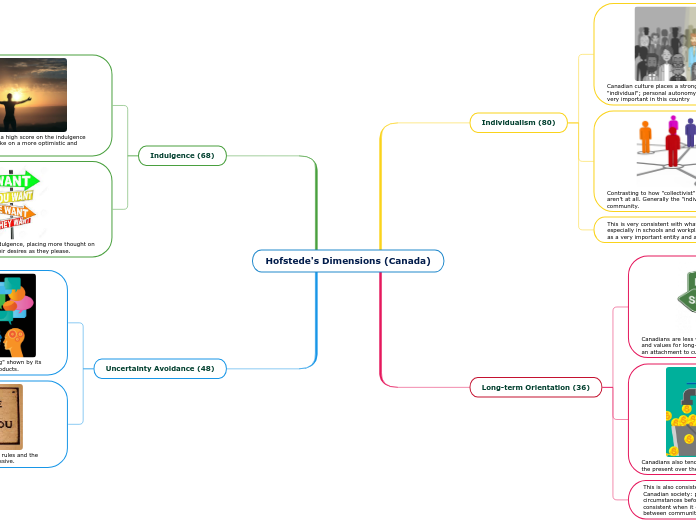Resources
5 Social Business Mistakes You're Making
5 Social Business Mistakes You're Making
1. No Involvement From The Top
2. No Reason For Social
3. Only One Reason For Social
4. No Rules Of Engagement
5. No Use Of Social At All (remember “ROI”)
List above from
http://www.informationweek.com/social-business/social_networking_consumer/5-social-business-mistakes-youre-making/240157357
Conclusions
Conclulsions
1. Privacy
2. Don't practice medicine in this setting.
3. Doctor/patient interactions ... ok or not?
4. Time, staffing, money constraints
5. No standards of use ... yet. No definitive guide to best practices ... yet.
6. Look for good contact points as you get started.
7. Start by watching and lurking, then commenting and interacting, then creating your own content.
8. Trust the community!
List above adapted from:
http://www.slideshare.net/RichmondDoc/im-grand-rounds
Social Media Strategy for Health Care
"Put the SOCIAL in social media. Don't eliminate it!"
If you are going to get involved in social media, start with good customer service and remember to listen to your community so that you continue to maintain a happy, mutually beneficial patient/doctor relationship.
Be human.
See the link in this seciton for one of the best recent examples of the power of social media in health care, "Seattle Children's Hospital creates "Cat Immersion Project" for homesick cancer patient."
Data Driven Decision Making
Data Driven Decision Making
1. Draw conclusions based on data
2. Assess what works and what doesn't. Act on it.
3. Make improvements to reach goals.
4. Use measuring tools
5. Evaluate the "standards" - Exposure, Engagement, Influence, Results
6. What can be measured in each social site?
7. Measuring what matters -- engagement, more than just vanity metrics, influencers, virality, repeat engagement, stories, content distribution, unique relationships
Evaluation Plan & Reporting Schedule
Evaluation Plan and Reporting
1. Develop a timeline for obtaining data
2. Extract data and save outside SM site when possible
3. Act on the data
4. Plan to review:
Exposure - amount of people you reach
Engagement - amount of people who take action in response to message
Influence - positive, negative, neutral in sentiment
Results - intrepretation of all previous aspects
Connect Internal Stakeholders
Connect Internal Stakeholders/Users
1. Find the SM users within. Organize. Share. Plan.
2. Get others in organization to create & manage groups/lists (i.e., curate a Twitter list or manage a LinkedIn group)
3. Share SM success stories
Staff & Time Committments
Staff and Time Committments
1. Do you have staff to devote to SM?
2. Can you route incoming questions?
3. Are you running a 24/7 SM operation? Be clear in expectations of staff and site visitors.
“This isn't an addition to your job. This is a part of your job. This is a conversation which is what we are trained to do. We are about the needs of the patient, and this is where our patients are and this is where their needs are met most effectively.”
Farris Timimi, M.D. Cardiologist & Medical
Director of the Mayo Clinic Center for Social Media
Define Target Audience
Target Audiences
1. What is your target health care audience? Patients (new, existing, former)? Caregivers? Doctors? Nurses?
2. Find the target audience and encourage them to connect to you
3. But, be familiar with all audiences
4. Does your content match the audience needs? How would you know?
6 Tenets of SM
Always be mindful of the ways users will connect to your organization and message.
1. Like
2. Comment
3. Share
4. Review
5. Rate
6. Tag
Policies
Social Media Policies
1. Do you need one? For whom?
2. Merger of existing organization policies?
3. How to handle if policy is broken?
4. Privacy implications in Health Care world?
Examples at links in this section.
Social Media @ MAYO Clinic
Content
Social Media Content
If we ask for user-generated content and listen in on conversations, we will better understand the types of content that matter and evolve alongside our audience.
Can you curate content you can find online in the various social sites, or do you need to create new content?
1. Tell stories
2. Have conversations
3. Provide testimonials
4. Share experiences
5. Provide a Call to Action in posts and content. Ask readers to report back and share their experiences.
Tip: Avoid cross-posting the same message from one social channel to another. It appears "cheap", quick, lazy, and does not indicate you know your audience on each site.
Expand this section to see the related links and information.
Creation
Content Creation
At some point, your team will need to create new content. Are you prepared?
1. Do you have connections to the organization's employees, users, etc.?
2. Do you capture content knowing that you may or may not use it?
3. Do you personal content by simply adding the initials of the creator?
4. Do you tell compelling stories?
5. Do you actively engage with users? Is the approach reactionary or proactive?
6. Do you know the audience? Does the content match their needs? How do you know?
Tips:
- Video and pictures drive the most amount of social engagement within all social sites.
- Who can tell better than the people themselves who experienced it beforehand.
- Testimonials are really one of the best marketing strategies and social media has more of it to offer.
- Be human.
- Conversations are just as vital in the SM world as new "fancy" content.
Check the link in this section to watch a presentation all about creating SM content for health care through story-telling.
Curation
Content Curation
Content curation, in its most simplest terms, is the act of gathering related, targeted pieces of content and sharing it.
When you can't create content, you can generally find it online. Curation is just as important as creation. Take the time to find existing content and organize it for your visitors.
1. Do you have a process for repurposing existing content?
2. Can YOU find your organization's existing content?
3. Do you know what the various curation tools are and how to use them (i.e., Storfiy, Paper.li, Scoop.it, ...)
4. Do you know what the most popular content items in your organization are?
5. Are you monitoring your brand, name, or online image looking for publicly posted items you can "borrow"?
Check the link in this section for related content curation resources and tools.
Social Media Channels
Social Media Channels
There are many social platforms to evaluate for inclusion in your SM plan. No community is so high and mighty that it doesn't need to participate in social media.
Expand this section to take a look at the various social sites, details on how to use graphics, monitoring tools, social hubs and more.
7. Be mobile focused
Be Mobile Focused
A recent Pew Internet Health study study determined that 56% of U.S. adults own a smartphone (May 2013 survey). This is the first time their study results broke the 50% mark. Also, half of online health information research is on behalf of someone else. The possiblities of a caregiver using a smart phone in a facility to look up something rise ever year.
When developing both your SM plan and content, consider that there is a really good chance that visitors to your sites will be using a smart phone or tablet.
1. Is your content mobile friendly?
2. Do you (or your team) participate in your SM channels on a mobile device yourself?
3. Do you use your SM channels for live events? If so, focus on mobile content and engaging experiences.
6. Work towards developing a "social hub"
Social Hubs (also known as Social Streams)
"A social hub serves as a single destination for curated social content posted by an organization. The hub serves as a landing page for engaging content (stories, videos, anecdotes, etc). Putting all of this information in one place allows an organization to tell an ongoing, cohesive story."
- Colleen Dilenschneider
Check the llink in this section to find resoruces and examples of social hubs.
5. Monitoring Tools
Social Media Monitoring Tools
If you want to know what’s happening in the social web you need social media monitoring tools. These tools can provide basic measurment data. More importantly, they help you manage the flow of information and commmunication in many social channels. Are you monitoring your brand, name, or online image looking for publicly posted items you can "borrow"? Some of the more popular ones include:
HootSuite
TweetDeck
Contaxio
Social Mention
HowSociable
Seesmic
Don't forget to use link shortening tools like Bit.ly or Ow.ly to track clicks easier.
Check the link in the section for not only links to these popular tools, but articles with more information about monitoring your accounts.
4. Social Site Graphics
Social Site Graphics
1. Is there someone who can make you graphics? Can you?
2. Are you aware of the specifics required on each site?
3. Do you have a variety of graphics to use (seasonal, event, highlights, …)?
4. Do you have permission to use people in the graphic?
Examples and details at link in this section.
3. Follow the SM site TOS
Sociel Media Site Terms of Service (TOS)
1. Do you know what you have agreed to when using the various social sites?
2. Does the site have a TOS, Best Practices, Guidelines, or other list you need to be aware of?
See examples of Facebook, Twitter, & Pinterest Business account TOS
Pinterest for Business
Twitter Rules
Facebook TOS
2. Health Care Specific
Doctor Centered
Sermo.com
Nurse Centered
TheNurseCompany.com
UltimateNurse.com
Patient Centered
PatientsLikeMe.com
23andMe.com
Webicina.com
WebMD.com
Caregiver Centered
Caring.com
1. The Big Ten
Networking sites
Facebook
Google+
LinkedIn
Blogs/Micro-blogs
Twitter
Wordpress
Tumblr
Content Centered
YouTube
Instagram
Pinterest
Wikipedia
Goals & Objectives
Goals and Objectives
1. Why am I using this?
Disseminate
Engage
Connect
Influence
Impact
2. What do I want to accomplish?
3. How will I know if I reach my goals?
4. How do I keep my community interested?
5. How will I manage my community?
Be realistic. Be relevant. Match to organization's goals.









